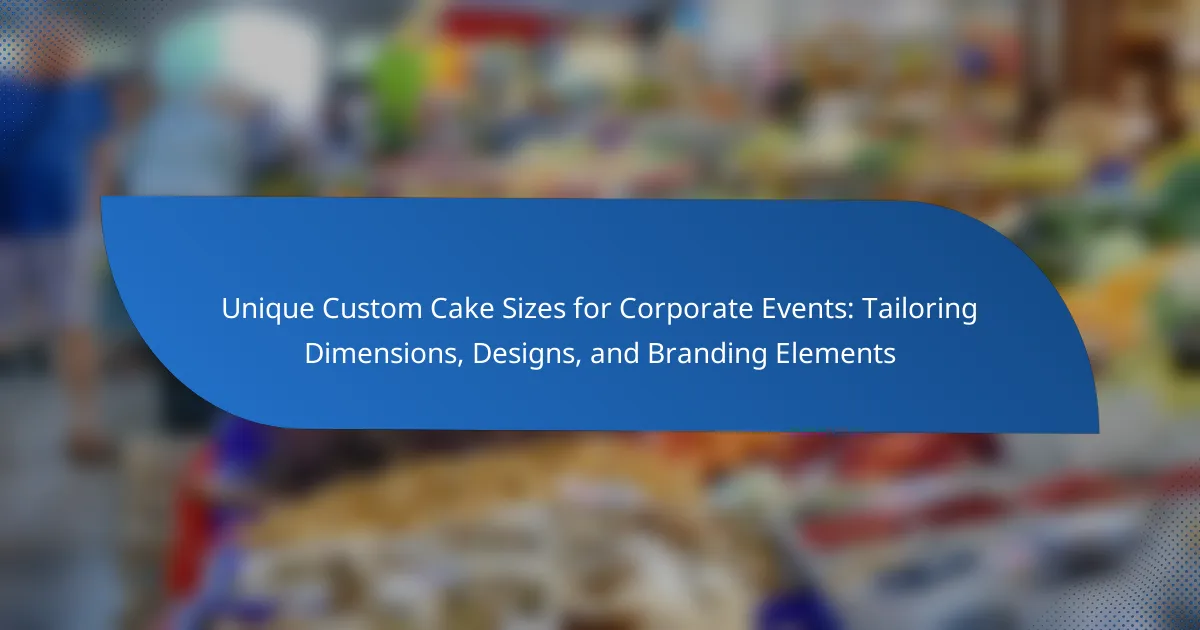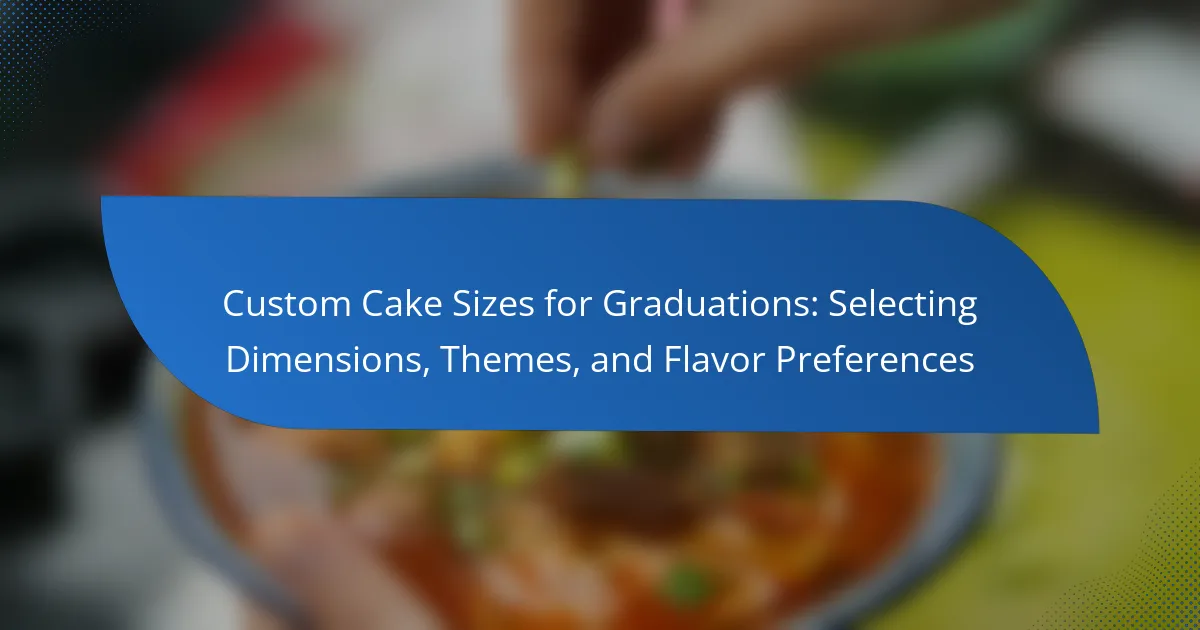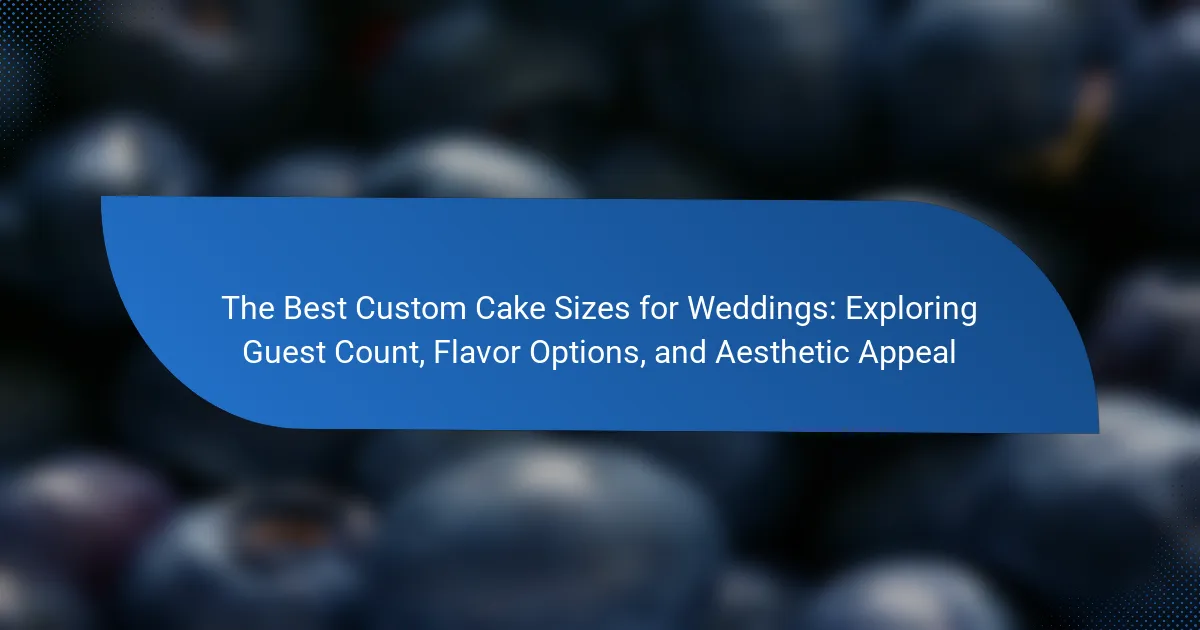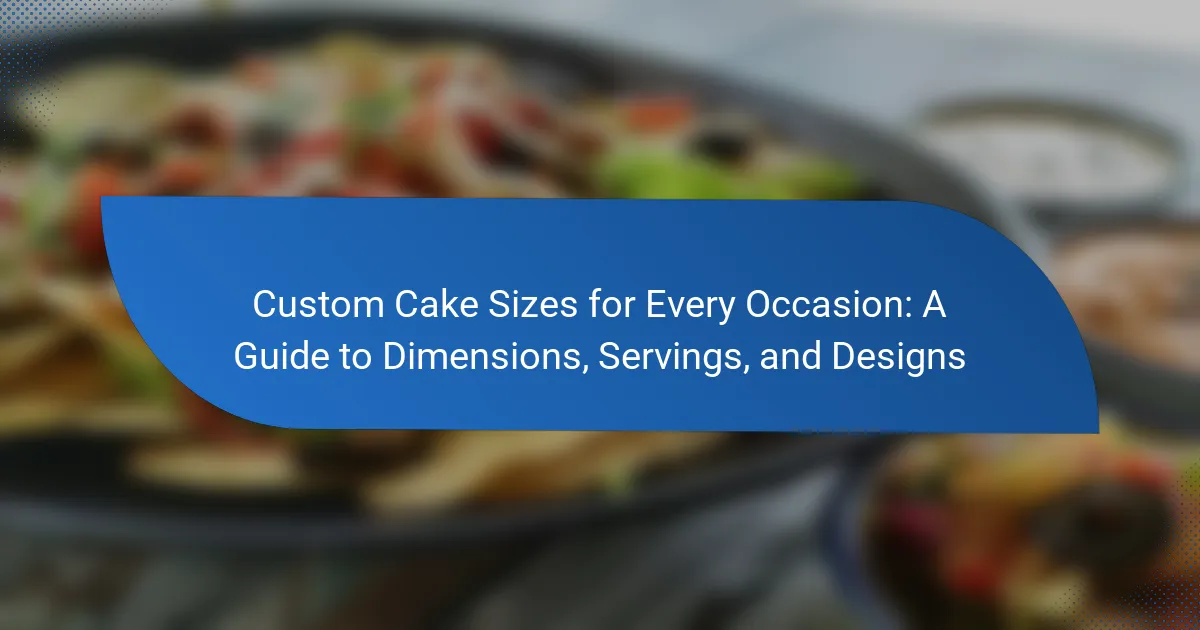Determining the appropriate custom cake size for an event involves assessing the number of guests and their preferences. A standard serving is typically one slice per person, with a 6-inch cake serving about 12 people and an 8-inch cake serving around 24. Key considerations include the type of event, the possibility of additional desserts, and the need for larger servings at larger gatherings. Consulting with a professional baker can provide tailored recommendations to meet specific event requirements. This article outlines essential factors to help ensure the right cake size for any occasion.
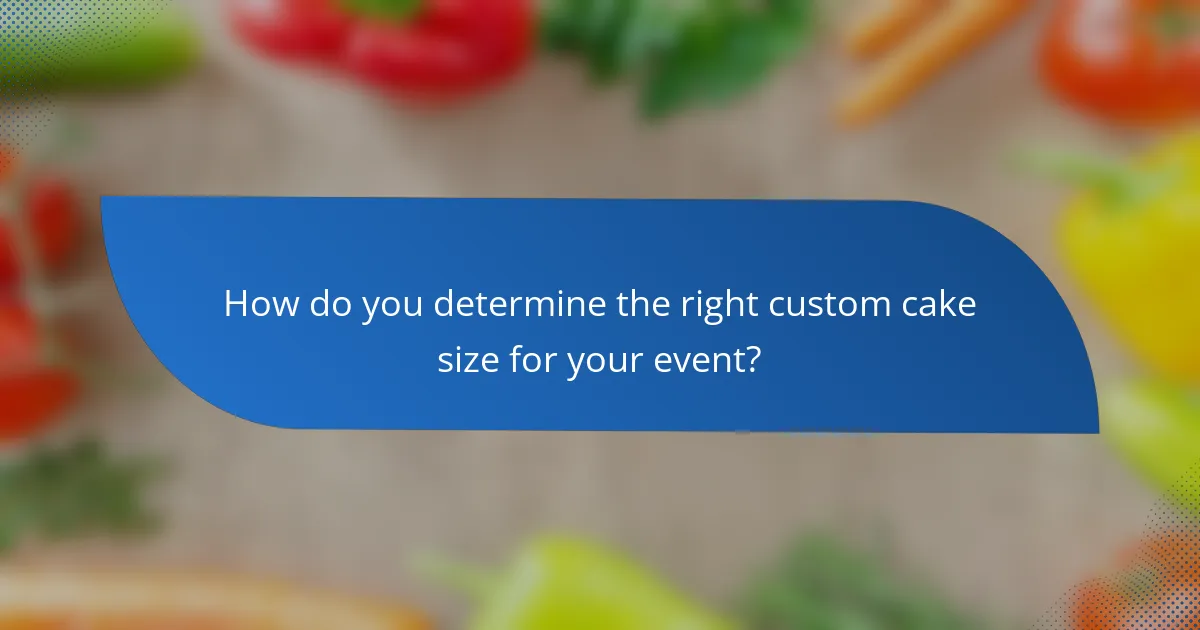
How do you determine the right custom cake size for your event?
To determine the right custom cake size for your event, assess the number of guests. A standard serving size is typically 1 slice per person. For example, a 6-inch cake serves about 12 people, while an 8-inch cake serves about 24. Consider the type of event; celebrations often require more cake. Factor in additional servings for larger gatherings or if guests prefer larger slices. Account for other desserts available at the event, as this may reduce the cake size needed. Finally, consult with a professional baker for recommendations based on your specific requirements and preferences.
What factors should be considered when choosing cake height and width?
When choosing cake height and width, several factors must be considered. The number of servings required directly influences the dimensions. A larger guest list necessitates a bigger cake. The occasion also plays a crucial role; weddings often call for taller, more elaborate designs. Cake stability is another important factor; wider cakes may require additional support. The type of cake and filling can affect height; denser cakes can be taller without collapsing. Lastly, aesthetic preferences should be considered; the visual appeal often dictates the chosen dimensions.
How does the number of servings impact the dimensions of a cake?
The number of servings directly impacts the dimensions of a cake. A larger number of servings requires a bigger cake to accommodate more people. Typically, the standard serving size for cake is about 1 inch by 2 inches. Therefore, to serve 12 people, a cake of approximately 6 inches in diameter and 4 inches in height is common. For 24 servings, a cake might need to be 8 inches in diameter and 4 inches tall. The increased servings necessitate larger diameters and potentially greater heights to maintain the same serving size. This relationship between servings and dimensions is crucial for proper portioning and ensuring everyone receives an adequate slice.
What role does the type of cake play in determining its size?
The type of cake significantly influences its size. Different cake types have varying densities and structures. For example, a dense cake like a pound cake will typically be smaller in volume compared to a lighter cake like a sponge cake. This difference in density affects how much batter is needed for a specific size. Additionally, certain cake styles, such as tiered cakes, require specific dimensions to maintain balance and aesthetics. The baking method can also dictate the final size; cakes that rise more may need larger pans. Thus, understanding the characteristics of each cake type is essential for determining the appropriate size.
Why is it important to understand cake serving sizes?
Understanding cake serving sizes is crucial for effective portion control. Accurate serving sizes ensure that each guest receives a fair share of cake. This helps in managing expectations during events. Knowing serving sizes also aids in planning the quantity of cake needed for an occasion. For example, a standard wedding cake slice is typically 1 inch by 2 inches. This allows event planners to calculate the total number of servings based on the cake’s dimensions. Proper understanding of serving sizes can prevent food waste and ensure everyone is satisfied. Additionally, it helps in budgeting for ingredients and costs associated with cake production.
What are the standard serving sizes for different cake types?
Standard serving sizes for different cake types vary. For a round cake, the standard serving size is generally 1 slice per person. A 6-inch round cake typically serves 6-8 people. An 8-inch round cake serves about 10-12 people. A 10-inch round cake can serve 14-16 people. For sheet cakes, a quarter sheet serves around 12-20 people. A half sheet cake typically serves 25-40 people. A full sheet cake can serve 50-100 people, depending on portion size. These serving sizes are based on average slice dimensions of 2 inches by 2 inches.
How can you calculate servings based on cake dimensions?
To calculate servings based on cake dimensions, determine the cake’s volume first. Use the formula for volume: π × (radius²) × height for round cakes. For square cakes, use the formula: side² × height.
Next, convert the volume to servings. A standard serving size is about 1 cup of cake. Typically, one cup of cake weighs approximately 8 ounces. A round cake with a diameter of 6 inches and a height of 4 inches has a volume of about 113.1 cubic inches, yielding roughly 8 servings.
For a square cake measuring 8 inches on each side and 2 inches high, the volume is 128 cubic inches, which can serve around 10 people. Adjust serving sizes based on how generous or small you want the portions.
What common mistakes should be avoided when sizing a cake?
One common mistake to avoid when sizing a cake is not accurately estimating the number of servings needed. This can lead to a cake that is either too large or too small for the event. Another mistake is failing to consider the cake’s height and width in relation to the number of tiers. A cake that is too tall may not be stable, while one that is too wide may not fit on the serving table. Additionally, not accounting for the type of cake and its density can result in miscalculating serving sizes. For example, denser cakes like pound cake yield fewer servings than lighter cakes like sponge. Lastly, neglecting to factor in the shape of the cake can also lead to sizing errors. Round cakes, square cakes, and specialty shapes all have different serving capacities.
How can miscalculating servings lead to issues at an event?
Miscalculating servings can lead to food shortages or excess waste at an event. When servings are underestimated, guests may not receive enough food, causing dissatisfaction. This can result in negative feedback and a poor event experience. Conversely, overestimating servings can lead to unnecessary food waste. According to the USDA, food waste in the U.S. amounts to approximately 30-40% of the food supply. This miscalculation can also increase costs for the event host. Accurate serving calculations are crucial for balancing guest satisfaction and budget management.
What are the consequences of not considering the cake’s height?
Not considering the cake’s height can lead to several issues. A cake that is too short may not provide enough servings for the intended guests. This could result in guests being left without dessert. Conversely, a cake that is excessively tall may create structural instability. Such instability can cause the cake to collapse, ruining the presentation. Additionally, the height affects the cake’s overall aesthetic appeal. A visually unbalanced cake may disappoint customers or guests. Proper height consideration ensures the cake meets both serving and design expectations. Accurate height measurements are crucial for successful cake planning.
How can you ensure your custom cake meets your expectations?
To ensure your custom cake meets your expectations, communicate your vision clearly with the baker. Provide detailed descriptions of desired flavors, designs, and themes. Share reference images to illustrate your ideas. Discuss size requirements based on the number of servings needed. Confirm the timeline for when you need the cake. Request a tasting session to evaluate flavors before finalizing. Establish a budget to guide the baker’s options. Frequent check-ins during the design process can help address any concerns. Clear communication throughout ensures alignment with your expectations.
What tips can help in accurately communicating size requirements to a baker?
Clearly define the desired dimensions for the cake. Specify height, width, and depth in inches or centimeters. Provide the number of servings needed for clarity. Use visual aids like sketches or photos to convey your vision. Mention any specific shapes or tiers required for the cake. Discuss any dietary restrictions or preferences that may influence size. Confirm the final details with the baker to ensure understanding. Effective communication minimizes the risk of errors in the final product.
How can you visualize the cake size before ordering?
You can visualize cake size before ordering by using visual aids like size charts. Many bakeries provide charts that depict various cake sizes alongside serving capacities. These charts help you understand how different dimensions translate into actual servings. You can also request a sample cake or a cake dummy to gauge the size. Some bakeries offer 3D models or digital previews of custom cakes. These tools can give you a clearer idea of the cake’s height and width. Utilizing these resources ensures you choose the right size for your event.
What are best practices for determining custom cake sizes?
To determine custom cake sizes, consider the number of servings needed. Calculate the size based on the guest list and portion sizes. Use standard cake serving charts for guidance. For example, a 10-inch round cake typically serves 25 people. Adjust the dimensions if the cake is tiered or shaped. Consider the cake’s height and width for aesthetic balance. Factor in any additional decorations or elements that may affect size. Finally, communicate with the client to understand their preferences and expectations.
The main entity of the article is custom cake sizes. This article outlines essential considerations for determining the appropriate height, width, and servings of a custom cake based on guest count and event type. Key factors include understanding standard serving sizes, the impact of cake type on dimensions, and the importance of accurate communication with bakers. It also highlights common mistakes to avoid, such as miscalculating servings and neglecting cake height, to ensure that the final product meets expectations and satisfies guests.
